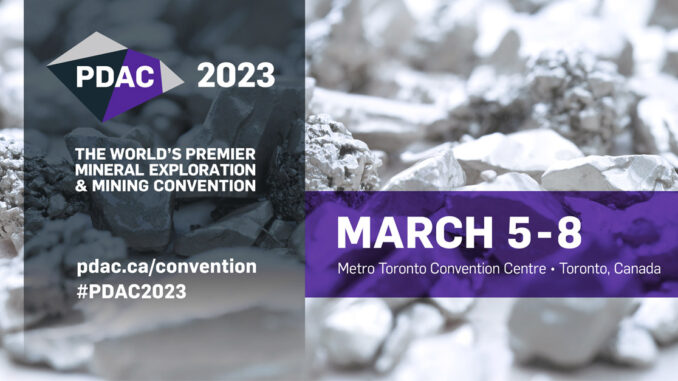Once again, eResearch returns this year as a PDAC 2023 media partner.
The annual conference, which brings together mining executives, geologists, analysts, investors, students, and government officials, plans to offer hundreds of hours and more than 100 sessions of mining content.
Similar to previous years, the online event will be divided into different programs including Capital Markets, Corporate Presentations, Indigenous, Industry Presentations Investor Exchange, Keynote, Short Courses, Student, Sustainability, and Technical Sessions.
A summary of a Technical Session by Jack Bedder, Founder & Director of Project Blue, titled “The Current and Future Demand for Critical Minerals” is overviewed below.
The Current and Future Demand for Critical Minerals
Jack Bedder, Founder & Director of Project Blue, discusses the current and future demand for critical minerals in the context of energy transition and decarbonization.
There are various motivations behind the global imperative of achieving Net Zero and the shift toward renewable energy sources. Bedder emphasizes the raw materials-intensive nature of the energy transition and highlights the importance of critical minerals in enabling this transition.
The Growing Demand for Critical Minerals
There is an increasing demand for critical minerals due to the global push for decarbonization. Bedder acknowledges the diverse motivations of different “actors” but highlights the alignment in rhetoric and policies among governments and industries worldwide.
He explains that the energy transition relies heavily on renewable technologies, such as electric vehicles and lithium-ion batteries. Bedder notes that these technologies require a significant amount of metals and minerals, and the construction of renewable infrastructure further amplifies the demand.
Identifying Critical Minerals Transition
However, Bedder acknowledged the subjective nature of what qualifies as critical minerals. He mentions the prominence of gold and copper but emphasizes that the energy transition necessitates a broader range of minerals.
Bedder introduces the idea of “usual suspects” like copper and aluminum, which underpin various sectors and technologies involved in the energy transition. Additionally, he highlighted the importance of other minerals like gallium, germanium, and silicon in industries such as semiconductors and “green” steel.
Stable Supply Chains
Unfortunately, there are challenges associated with meeting the growing demand for critical minerals. He reiterates the imperative nature of energy transition and highlights the potential risks posed by supply-side constraints.
Bedder presents data indicating the significant growth requirements for lithium, graphite, and cobalt. He emphasizes the need for stable supply chains and the construction of new ones to ensure adequate supply to meet the strong demand outlook for critical minerals.
Barriers to Supply
Barriers to the supply of critical minerals include the declining investment in mining due to previous commodity price falls, which led to a reluctance to invest in new projects. He emphasized the importance of diversifying the investment base to attract various stakeholders.
He also discusses the challenges related to permitting, declining ore grades, and the geopolitical climate. Bedder highlights the impact of policies like the US Inflation Reduction Act (IRA) and emphasizes the need for global solutions to avoid potential problems.
Final Thoughts
The potential implications of falling short in critical material supply could mean a slower rollout of the energy transition, delays in EV adoption, and the need for alternative technologies and research.
He acknowledges that the market will find solutions but emphasizes the importance of overcoming real obstacles to meet the forecasted demand for critical minerals.





